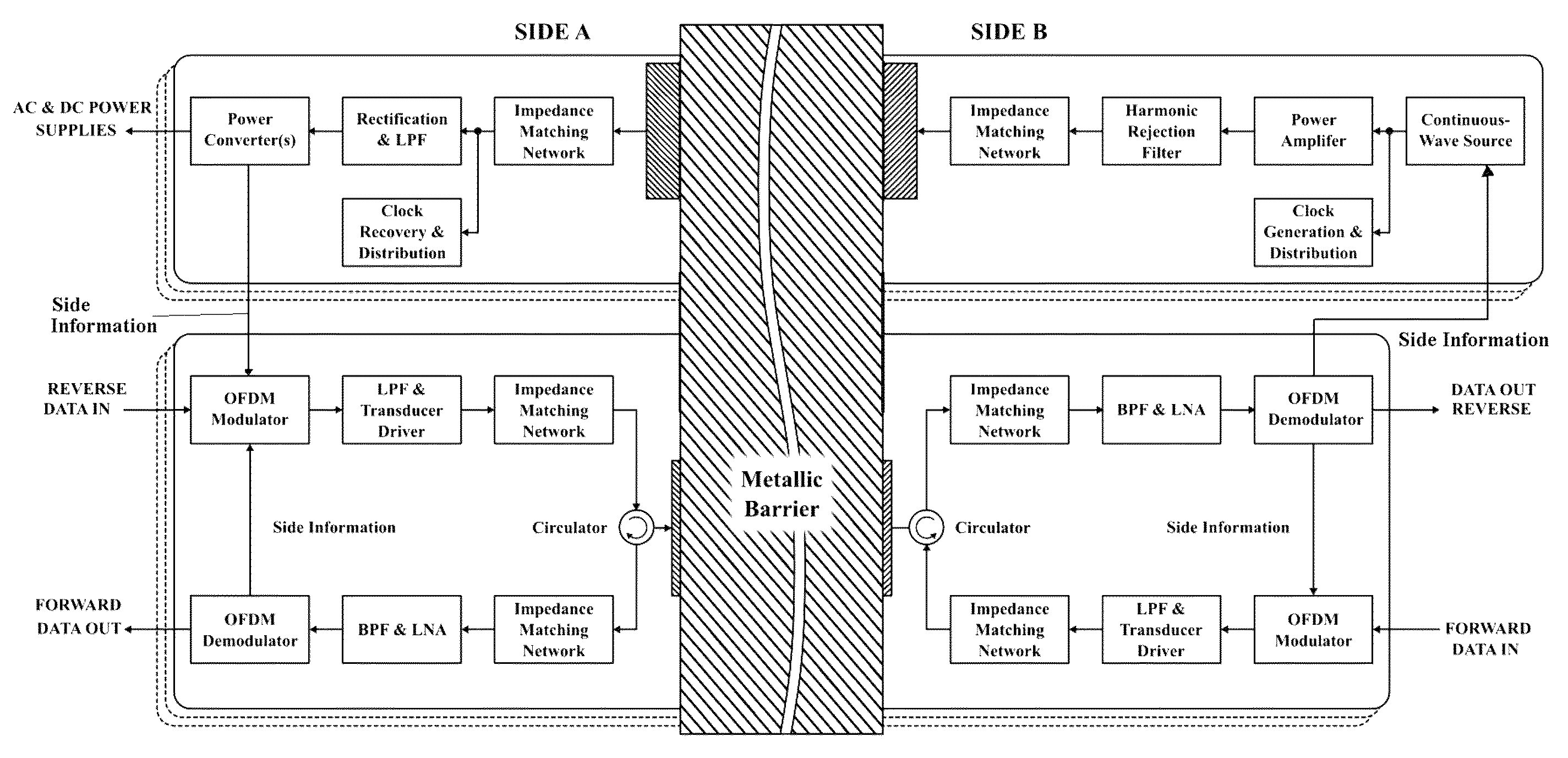Adaptive system for efficient transmission of power and data through acoustic media
a technology of adaptive system and acoustic medium, applied in the field of communication and power transmission, can solve problems such as and achieve the effect of reducing data and/or power transmission capabilities
- Summary
- Abstract
- Description
- Claims
- Application Information
AI Technical Summary
Benefits of technology
Problems solved by technology
Method used
Image
Examples
Embodiment Construction
[0041]Referring now to the drawings, in which like reference numerals are used to refer to the same or similar elements, FIG. 1 shows an example of an acoustic-electric channel through a barrier 10 for transmitting signals through solid or other media, with an electroacoustic transducer 12 and 14 on each side of the barrier 10. Throughout this disclosure, the transducers 12 and 14 shown in the drawings symbolize the transducers proper plus their connection to the barrier wall, i.e. electrodes with or without epoxy, acoustical couplant, electrical insulation layer, acoustical transition layers, etc. Such an arrangement can be especially advantageous when the media is electrically conducting, appreciably thick and when maintaining its structural integrity is critical, e.g. by not drilling holes through the barrier. This is because Faraday shielding effects prevent conventional electromagnetic wireless signals from passing through conducting barriers and penetrating certain barriers wo...
PUM
 Login to View More
Login to View More Abstract
Description
Claims
Application Information
 Login to View More
Login to View More - R&D
- Intellectual Property
- Life Sciences
- Materials
- Tech Scout
- Unparalleled Data Quality
- Higher Quality Content
- 60% Fewer Hallucinations
Browse by: Latest US Patents, China's latest patents, Technical Efficacy Thesaurus, Application Domain, Technology Topic, Popular Technical Reports.
© 2025 PatSnap. All rights reserved.Legal|Privacy policy|Modern Slavery Act Transparency Statement|Sitemap|About US| Contact US: help@patsnap.com



